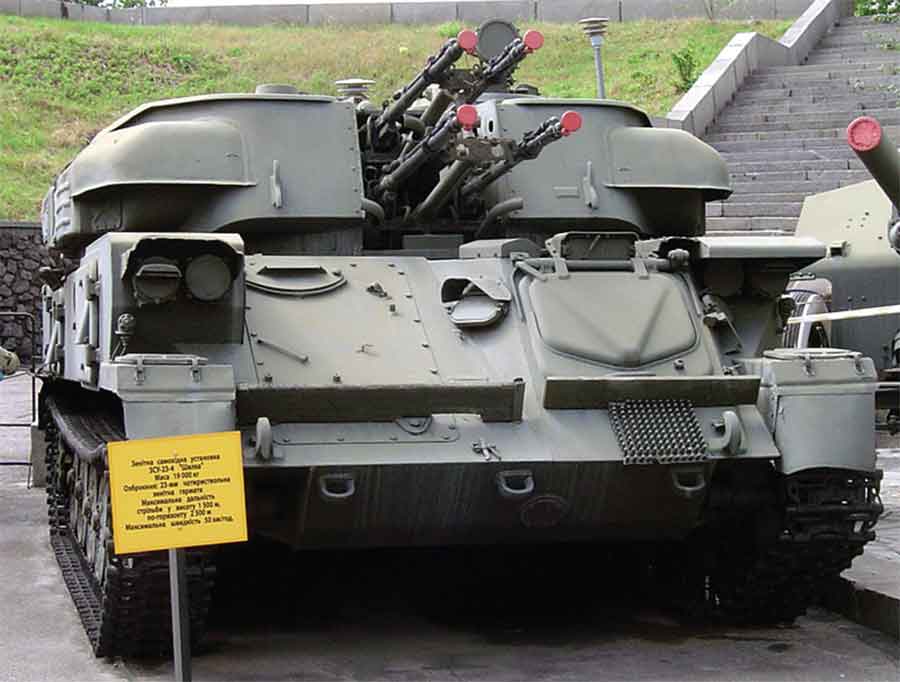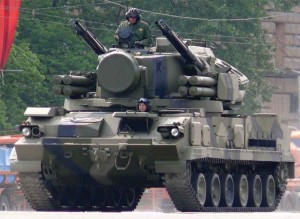Mercifully, the system appears to have finally woken up. After years of neglect and delay, we appear to be adding the much-needed teeth to AAD. With a wide array of radars and SAM systems planned for induction, contracts worth over Rs 17,000 crore have been inked in recent months and more are reportedly in the pipeline. Ironically, the AAD units of Pakistan are much better equipped, their equipment including quick-reaction missiles and man-portable SAMs such as laser-guided Stingers and Mistral.
As China develops her military sinews and Pakistan continues to be her favoured protégé, the scene in the subcontinent is changing…
Incidentally, Pakistan has given shoulder-fired SAMs even to the infantry battalions whereas in our case, these are held only with AAD and in small numbers with Army Special Forces units. India has launched the procurement process for three types of SAMs (medium-range, quick-reaction and man-portable short-range missile systems) to replace the AAD’s Kvadrat, Strela and other systems. These will be in addition to two regiments of the indigenous Akash systems, with six firing batteries and hundreds of missiles each, ordered at a cost of Rs 14,180 crore. The AAD will also need a Rs 200-crore ground infrastructure for these two Akash regiments.
The IAF is in the process of getting eight Akash squadrons, first one having been deployed at Gwalior. In addition, a Rs 750-crore project is underway to upgrade about 50 Schilka anti-aircraft systems (imported from Russia in the 1980s) that are equipped with four 23mm automatic cannons. Simultaneously, the AAD defence units are also inducting, for over Rs 1,500 crore, some 30 three-dimensional tactical control radars, which can track airborne targets up to a range of 90 km, plus over 15 low-level light-weight radars, which can be used in mountainous terrain.
Sub-Continental Scene
As China develops her military sinews and Pakistan continues to be her favoured protégé, the scene in the subcontinent is changing and is likely to pick up pace with Chinese RMA. Trends in the region indicate major focus on missiles of all types including cruise missiles and ballistic missiles. UAVs are increasing rapidly and future conflicts would see their prolific use with both China and Pakistan producing them indigenously.
Then comes the emergence of innovative asymmetric air threat from non-state actors or more in our case, Pakistan and China supported so called non-state actors. The Aum Shinrikyo Cult that undertook simultaneous Sarin gas attacks at five places on the Tokyo metro had two remote control helicopters that luckily had crashed during trials. Otherwise they had enough Sarin to kill one million people and wanted to spray Tokyo city. So, today each flying object whether civil or military is a threat if it is in the hands of an adversary or a terrorist. With both China and Pakistan stoking the internal fires through Maoists, LeT and IM, remain alive to emerging threats (both sub-conventional and conventional levels) to customise own air defence cover accordingly.
Both manned and unmanned aerial platforms would be used for attack…
At the tactical level, the threats that we should expect would be more fire-and-forget type or Precision Guided Munitions fired from long or very long ranges. Both manned and unmanned aerial platforms would be used for attack. Existing global trends too point towards proliferation of long range, precision guided and fire-and-forget missiles delivered by manned or unmanned platforms.
Air Defence Control and Reporting System (ADC&RS)
The activities of the AAD are not restricted to deployment of GBADWS only. There is also a large inventory of surveillance sensors in the tactical battle area to detect hostile aerial intrusions. The Indian Army’s surveillance and battle management is integrated with the IAF in order to facilitate detection of hostile aircraft and their engagement with appropriate weapons well before they can carry out their missions.
As part of the operational information systems being developed by the Indian Army under the Tac C3I, the Air Defence Control and Reporting System (ADC&RS) is also being developed. Contract for this project was signed with BEL in March 2008, with the entire project spread over the Army’s 11th and 12th Plans. The project was based on the Army’s philosophy for Air Defence Control and Reporting System. As per initial plan, the fielding of the Test Bed was to be done in December 2009; however, this is yet to materialise. Moreover, the initial test-bed was planned independently. Integration with the IAF’s Air Defence System (also under development) was planned at a later stage – a folly recognised and rectified only in 2008. An integrated test-bed was first planned in 2009, which was then delayed to October 2012 but has still not materialised. Presently, Beta testing is being done and hopefully, the system will go for user trials by end 2013/early 2014. As per original plans, fielding of ADC&RS pan army was to be completed by 2014, which may now happen by 2019-2020.
It would be prudent to leverage our strategic partnership with countries such as the US…
The Future
The air threat envelope is increasing exponentially both in range and altitude, making it essential that the range and altitude of coverage of GBADWS is increase commensurately. Air defence in the emerging battle-space, therefore, necessitates deployment of multi-layered and multi-tiered mix of weapon systems that are hardened to function in a hostile cyber and electronic warfare environment. Overall, within the gamut of the Indian Army’s vision of the future, AAD must evolve into a modern net-enabled force capable of providing air defence protection to field forces and strategic assets against the complete spectrum of air threat in all operations of war and in all types of terrain. In doing so, the new technologies of stealth, unmanned aerial platforms and the Chinese concept of mass attack using a variety of warheads must be taken into account.
DRDO’s Laser Science & Technology Centre (LASTEC) is developing ADITYA – a vehicle mounted gas dynamic laser-based DEW system (Technology Demonstrator). A 25-kilowatt laser system under development would be capable to hit a missile in terminal phase at a distance of five to seven kilometres. However, it would be prudent to leverage our strategic partnership with countries such as the US where the private industry has already been developing truck mounted laser weapon systems for some time with greater ranges, capitalising on the US offer to share technologies. This would help leapfrog technology and telescope the time for us to establish requisite and state-of-the-art GBADWS.
In addition to our traditional focus on tackling airborne delivery platforms such as aircraft, helicopters, UCAVs and the like, the AAD will eventually have to also develop capabilities to tackle the weapon payloads of these platforms. This will involve fielding of systems to disable and/or destroy warheads and defeat soft kill options such as blinding and misguiding sensors.
The air defence equipment of the IA is about three decades old and needs to be modernised…
Conclusion
Overall the air defence equipment is about three decades old and needs to be modernised. The Indian Army has to ensure that procurements in the pipeline need to be expedited and there are no slippages. More importantly, a holistic review and a road map is required for coping with the magnifying threats from the third dimension and the new technologies that are making these threats even more potent with the passage of years.






